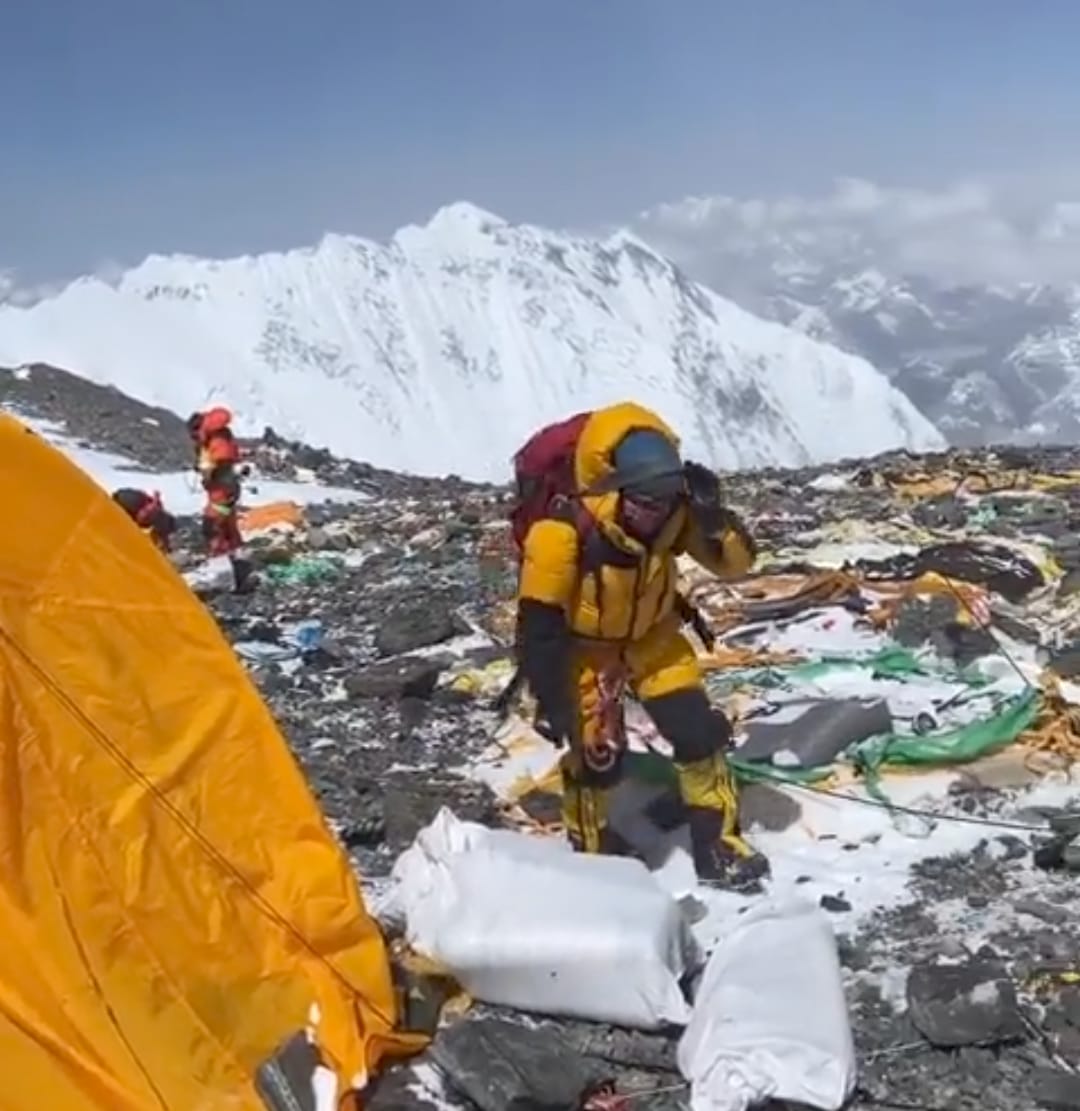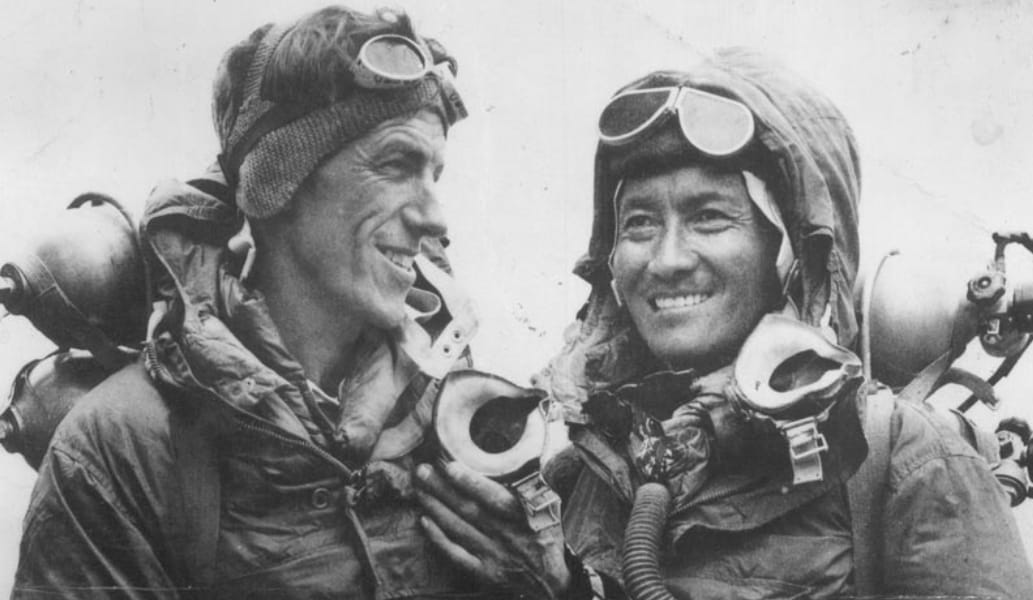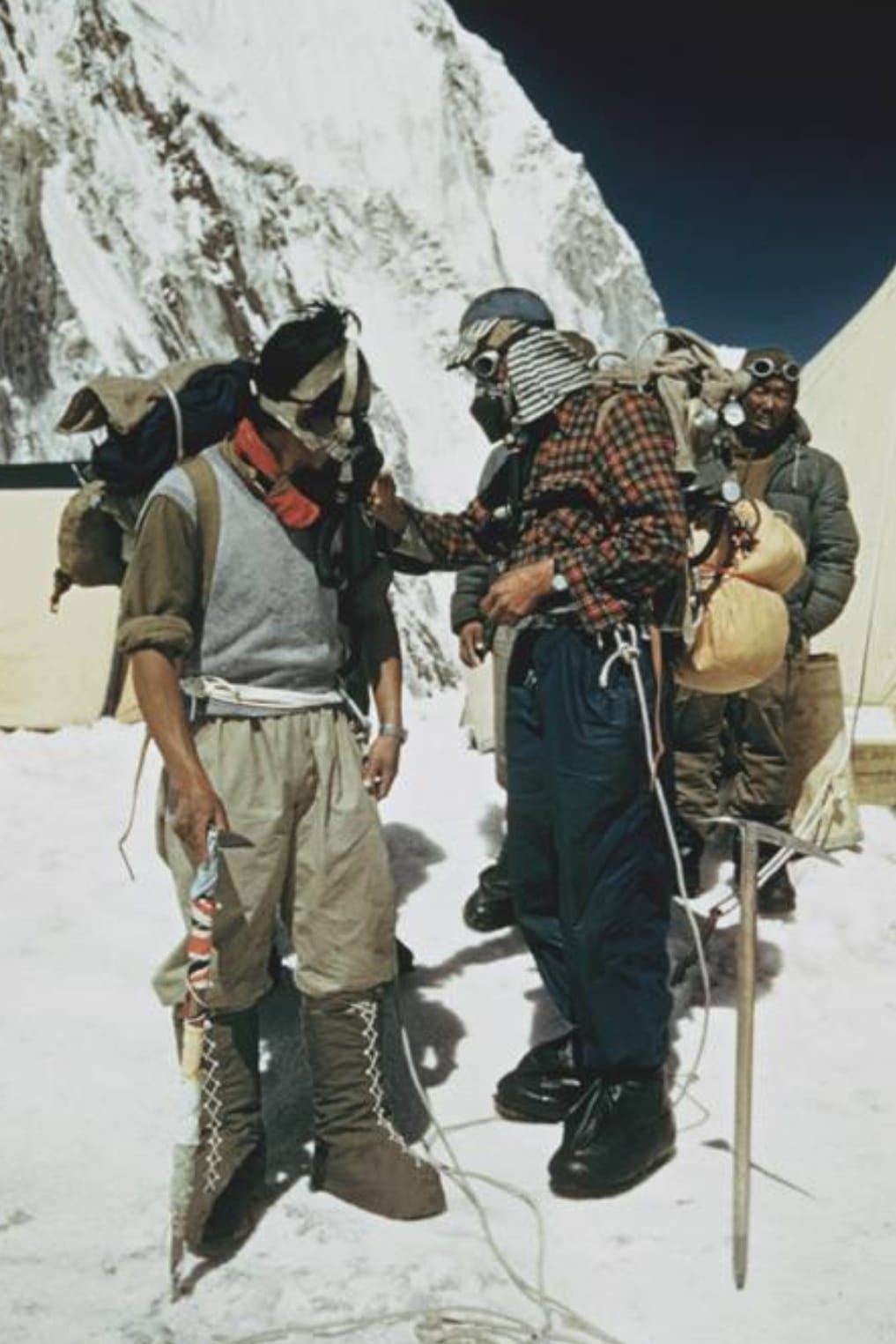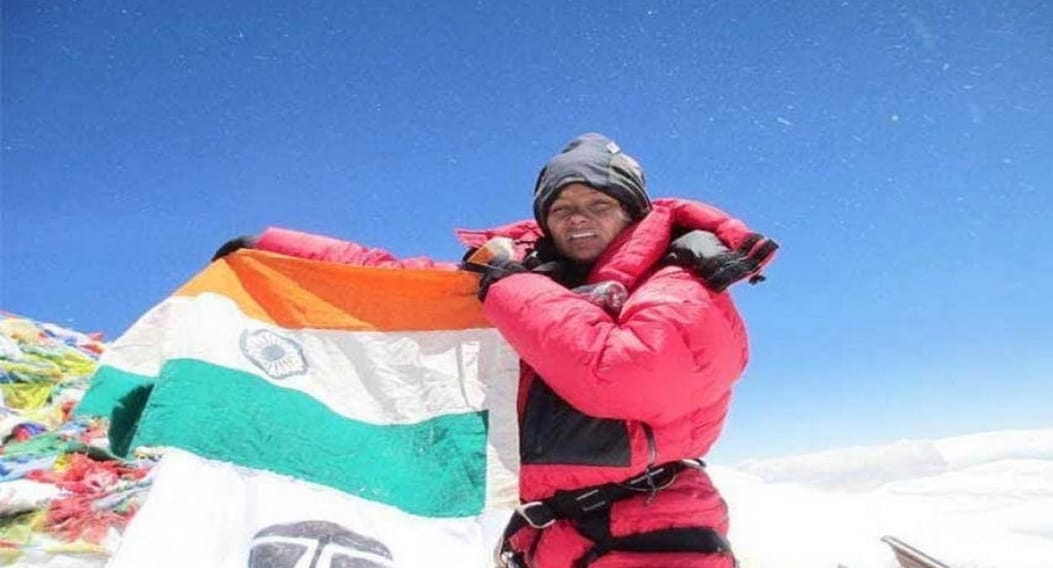Who is a mountaineer? Perhaps that’s a question that needs to be asked more urgently now than ever before. Even as the Twitter hashtags #everestday and #Everest70 celebrate a milestone in the history of human exploration of the world, the tonnes of trash left on the world’s highest mountain, revered as “Chomolungma (Goddess Mother of the World)” in Tibetan, show the repulsive side of “Everest tourism”.
Tourism is exactly what it is. The summit of Mt Everest is no longer the same place where Edmund Hillary of New Zealand and Tenzing Norgay Sherpa, nicknamed “Tiger of the Snow”, stood on May 29, 1953, putting their feet where no human footsteps had reached before. The two were friends, and when they reached the summit, they strived together and made it together.
Today’s Mt Everest has been reduced to a selfie point, a checklist item, where any climber who can spend approximately USD50,000 or more can go by holding the hands of their Sherpa team. The mountain is a cash cow, as issuing hundreds of permits puts millions of dollars into the Nepal government coffers. Each of the climbers leaves an average of 8-10kg of garbage on the mountain, plastic trash that never biodegrades and pollutes the “roof of the world”.
As the world marked the 70th anniversary of the Hillary-Tenzing feat — the New Zealander is said to have stepped on the summit first and then pulled up the Sherpa, who was just behind him — a distressing video of the trash on Mt Everest was released on Twitter by Everest Today, a news blog that covers “mountaineering over the Himalayas and Karakoram with special focus on 8000m peaks”. The video credit was given to Tenzi Sherpa.
The revolting pile of trash represents an uncontrolled number of climbers on Mt Everest, climbers who very often do not have the experience to scale an 8,000+ metre peak. Indeed, the Everest is just a little short of 9,000 metres. As the recent disappearance and, consequently, death of Shrinivas Sainis Dattatraya, Indian-origin climber from Singapore, has proved, even a substantial record of scaling peaks is no guarantee that Mt Everest will spare a climber.
Shrinivas had climbed, among others, Denali (6,190 metres) in Alaska, United States of America, and Manaslu (8,163 metres) in the Nepalese Himalayas, before climbing Mt Everest, where he has been missing since May 19 (presumed dead now after a long search) when descending from the peak.
For any climber who has not bothered to train properly before, the Everest could well become a guaranteed graveyard.
Each disappearance is followed by a massive hunt to find the missing climber, resulting in a huge expenditure of resources, often putting the search & rescue team members themselves in danger. At least 12 people have died so far during the 2023 spring climbing season, more than double the annual average of climbing deaths on Mt Everest, and five more were missing until today.
Climber expertise is compromised
Overcrowding certainly has something to do with the high number of deaths. It takes years of rigorous work to be prepared for the highest mountain in the world; hundreds of people aren’t qualified for it. But hundreds of permits are being issued, which means the climber expertise is seriously compromised, to say nothing of the trash being left on the slopes.
An April 28 report by the news agency Reuters was headlined “‘Death zone’ queues feared on Everest as Nepal grants record climbing permits”. The report said: “So far, Nepal has handed out a record 463 permits to climb Everest between March and May, beating 2021’s 409.”
Being stuck in a human ‘traffic jam’ on Mt Everest is not quite like waiting it out in a city traffic jam. The air is so thin at 8,000 metres and above that there’s hardly any oxygen in the atmosphere. This poses a serious risk if a climber runs out of bottled oxygen for some reason, while waiting in the queue to reach the summit. The Reuters report quoted Garrett Madison of the US-based company, Madison Mountaineering, as saying, “The challenges with more climbers on the mountain will be potential traffic jams on the climbing route, especially if the weather windows are few and far between. This can lead to climbers running out of oxygen and facing exhaustion/exposure in the ‘death zone.’”
Still, there’s no government-imposed limit on the number of Everest permits, and it’s left to the expedition companies to decide when to start the climb. That means crowds, garbage, deaths, and a general mess.
It’s all a money game now
On the 70th anniversary of the first human footprint on the peak of Everest, celebrated climber Bachendri Pal, the first Indian woman to unfurl the tricolour on the world’s highest summit, was scathing about what she felt was “overcrowding of mountaineers who have the money to buy a support system, but lack the right intent, training, and experience”, as told to Times of India.
Pal called for putting a limit on the number of permits granted annually, stating that in her time — she summited in 1984 — only “experienced and trained people” could climb up the Everest. “But now, anyone who has the money is allowed to climb, as if it’s a tourist spot.”
That begs the question: “Who is a mountaineer?” Is every climber of Mt Everest a mountaineer? The question was raised by Anindya Mukherjee, a two-time winner (2013 and 2023) of the Jagdish Nanavati Award for Excellence in Mountaineering, instituted by the Himalayan Club, speaking to Connected to India about the problems of the way Everest expeditions are conducted now.
“Now you can pay USD65,000-70,000 and climb Mt Everest; the top companies charge that. But USD45,000-50,000 is charged by the Nepalese companies,” said Mukherjee. The cost difference isn’t just cosmetic. The top companies require their Everest aspirant clients to first climb Denali in Alaska (which at 6,100+ metres mimics the feel of an 8,000+ metre peak because of its proximity to the Arctic Circle) or Kilimanjaro in Tanzania (which at 5,800+ metres is still good training for the Everest because of its highly unpredictable weather) or other 8,000+ metre peaks.
The Nepal-based companies have only one requirement: money. “If you can fork out the cash, you can climb Mt Everest,” said Mukherjee.
He pointed out that if an expedition attempted Mt Everest from the China side, there would be a “filter” for Chinese nationals in the team; they’d have to have scaled an 8,000-metre mountain before. For the foreigners in the team, there would be no such filter, and the Chinese authorities “don’t care”.
As for the ridiculous number of people up there, Mukherjee summed it up in one word: “overtourism”. Expressing a view similar to that of Bachendri Pal, he said, “There’s no spirit of exploration anymore. If you have the money, if you can walk, the Sherpas will do everything for you — they’ll cook for you, feed you, and put the crampons on you.” And then, maybe you’ll summit Mt Everest. But will you be able to make it back to the base camp?






